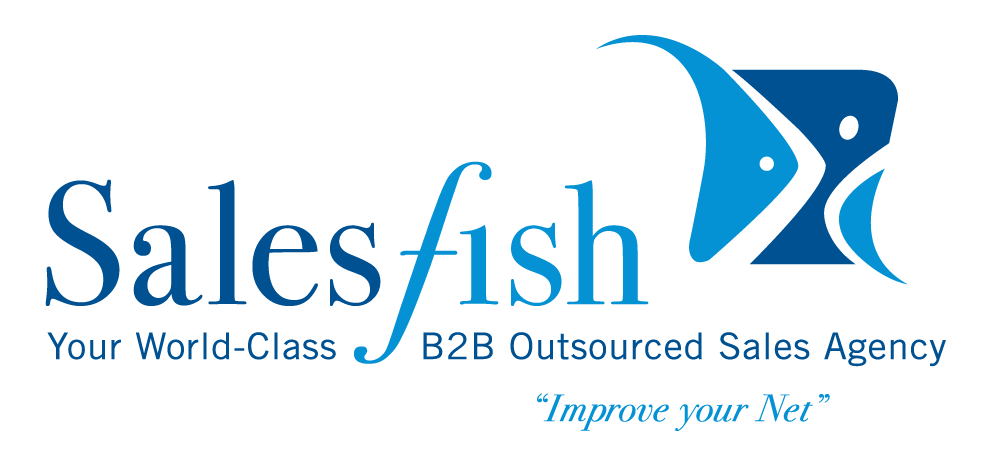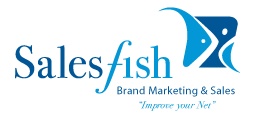Welcome to SalesFish Brand Marketing & Sales, the most strategically biased B2B Marketing Agency, telemarketing services, telemarketing companies (sales agency) and digital marketing companies, serving Orange County, Los Angeles, San Jose, Sacramento and the Pacific Northwest (Bend, Portland, Seattle). We gladly serve California and all 50 United States!
The day of your sales pitch is drawing closer. You’re two parts scared, two parts excited about the whole situation. You just want to craft a killer sales pitch that will ensure the close. It’s a big one and you definitely don’t want to mess it up.
This is not your first go around but you feel like you’re just seeing what sticks with your last few pitches.
Pitching is definitely an art and there is no one way to go about it. However, there are certain things that you should remember. And these things help you focus on the goal, keep your pitch effective and even version control your pitches for various clients and deals.
I put together this list of solid pitching advice you must take to heart and apply not only to your pitches but to all your sales calls and presentations.
Diligence is key: Plan ahead, stick to it and follow through
There’s no way around hard work in sales. More so in pitching where a lot of the work that’s been put in so far relies.
You have to understand and take to heart that selling isn’t easy (if you haven’t already).
Understand your prospect
The more you understand your prospect, the more you know about them, the higher your chances are to close the deal. You’d think that this is obvious but 82 percent of sales professionals lose deals because they are not aligned with the needs of the buyer. No matter how awesome your product is, if you can’t show its benefits in the context of the buyer’s situation, the value will probably be lost on the buyer.
Besides, do you expect the same pitch to close different clients? The only way you can tailor-fit your pitch to a prospective customer is to research about them and make projections ast to what kind of delivery and what pitch angles would work for them.
Starting there, you can start creating a solid pitch.
Initially, you must ask the right questions that will extract the customer’s specific needs (which you must have initial ideas of already). This eases the process to the next step.
Clients feel valued when you exhibit knowledge of their company. Unless it’s classified information, they’d appreciate that you took the time to get to know their process and show how your product will work for them. Highlight which features will bring solid, quantifiable benefits to them.
Are you talking to the decision maker? Make sure you are!
A pitch is a only a pitch if there’s a possibility of closing the deal on the same meeting. Not that being prepared for meetings isn’t good practice but there’s a significant difference between a sales call that’s for prospecting and for a pitch.
If you’re pitching to a non-decision maker, you’re wasting both your time and theirs.
Give answers that fit in the sales pitch proper
You should be able to provide answers to any question they might have relating your product and problems they are struggling with.
Author, Canva chief evangelist and venture capitalist Guy Kawasaki shares,
Enchantment is the purest form of sales. It is about changing people’s hearts, minds and action because you provided them with a vision or a way to do things better. The difference between enchantment and simple sales is that with enchantment, you have the other person’s best interest at heart too.
Instead of focusing on the strengths of your product on its own, acknowledge the prospect’s problems and discuss how the product will provide solutions. Don’t cast a wide net when talking about problems. Speak to the unique challenges of your client’s company and hone your pitch to the specific features that fit nicely as a solution to your prospect’s issues.
Always, always use simple language.
Even when according to your research, the client has deep experience in the field, the ability to discuss benefits as simple as possible is always more impressive that a bunch of words that sound nice but are hardly comprehensible.
You should be capable of presenting your unique value proposition (UVP) in a simple, easy-to-digest way. Your UVP is a short, single, clear and compelling message that states exactly what sets you apart from all existing solutions and makes the case that your product is worth buying.
Base your pitch on the length of time that’s available to you. Prepare a sequence that will make sense with how much time you have. Deliver the most value within the time that’s allotted to you.
Address objections firmly and respectfully
First things first: Do not avoid or ignore objections! Don’t dance around it. And definitely don’t invalidate objections. The prospect comes from a place of need and an objection is a moment of being astray. Lead them back by addressing the objection and emphasizing the benefit and value once more.
When preparing for the pitch, you must write down all possible objections you can think about.
You’re probably familiar with BANT—where most objections come from.
- Budget – No money for your product
- Authority – No authority to decide
- Need – No need for your product
- Timing – Not the right time to buy
Explore possible objections and prepare answering each one, not only with a response that would calm the reasons of objection. A good way to approach objection is to flip the script.
If they’re already using a competing product, always address objection based on value and not by criticizing competitors directly.
- Sample objection: Product-needs risk.
Your prospect may say, ”Your product may work for others, but will it work for me?”Counter argument: The easiest way to deal with this particular objection is to outline the features of your product in detail, so that your prospects can see how they would benefit. Show the delineation of how it will benefit them and how it helps others too. If possible, give them a free trial.
Over time, your ability to answer objections will be honed. Your understanding of how your product fits their business is your best weapon.
Another tip: For pricing objections, remember that it’s never about price. Do you think someone who is in the position to call the shots for a business will turn down a product that put them in the position to grow over time in a much faster pace, guaranteed, just for a couple thousand dollars? If the product fits and you’ve done your job as a sales professional, the price issue would be easy to answer.
Show value for money
Your product’s pricing plays a significant role on the number of clients you get and the revenue you build over time. If the prospecting and research have been done right, it’s only a matter of showing the prospect that the product brings much more value than what it costs. Even when you’re confident that the price point is nothing compared to value, you still need to make them realize that and get over the phase where the prospect is getting negative feelings just because it’s a discussion on price already.
And of course, make sure price is the last issue you go over. Validate the need, demonstrate value and address objections before coming to the price discussion. This is a proven formula that’s brought success to many pitches. Pro-tip: On the pricing page of your slide (if you’re using one), still empasize benefits.
Don’t listen to answer, listen to understand. Listen, really listen.
Keep an open mind, go into the pitch with a readiness to listen. Make the prospect do most of the talking. Explore their thgouhgts and respond with deep, incisive followup questions. Aim to understand their business needs and show empathy—both are crucial in closing deals.
When you can mirror their thoughts into your product presentation, the sales message will be strong and attractive. You will be able to successfully preempt pressing questions and objections. Most successful companies use this to their advantage.
Insert calls to action as natural and appropriate
Move your prospect through a “smaller” sales process throughout your pitch. Get them to agree to your points and make them an advocate of your product by setting up opportunities where they say how the product will help them. This takes skill, and most of the skill lies in asking questions.
When you ask the correct questions that unlock realizations in a prospect’s mind, they will sell to themselves. Of course, when the questions are answered, you have to promptly plug-in a call to action which can be many things. You can ask them for more ways they see the product working for them, ask them if they’d like a trial, ask for their ideas on how the product can be improved or customized based on their needs, and of course, THE ask.
Remember that throughout the questions and mini call to actions that you’ve been serving, the internal objective for you is to stoke their interest and desire. Give them more reasons to say yes, make them realize more reasons and let them come up with more uses and benefits your product will bring the company.
The ask or the closing call to action where you directly ask the prospect to purchase your product should come at the right and ripe time within your pitch. If you’ve addressed all objections and have gone over the pricing hump, go for the close.
Pitch with confidence
The great American racer Bobby Unser said, “Success is where preparation and opportunity meet.” And that’s definitely the case with sales pitches. You’re given the opportunity or you’ve created the opportunity to be able to close a sale. You have airtime with someone who can make the decision. Prepare and go there in confidence. When you’re prepared and you’ve ran over everything in your head, there’s no reason to fear. Besides, your pitching skills will get better over time. Prepare well, pitch with confidence and learn from your experience.
It’s just a matter of diligence for you to become a closing machine.
Stay tuned for more relevant content on creating world-class digital marketing strategies and B2B telemarketing sales strategies. We at SalesFish Brand Marketing & Sales thank you for joining us in our commitment to unwavering strategic planning, B2B brand marketing and B2B sales execution.
Call today and our “high-touch” dedicated team will assist you in assessing your strategic sales goals to tailor our marketing and sales tactics to your specific needs.
SalesFish Net of Sales Services:
- B2B Direct Sales, Channel Sales and Marketing Strategies
- On-Site B2B Presentation, Negotiation and Sales
- B2B Telemarketing and B2B Telesales Services
- Cold Calls and Appointment Setting
- Online Presentations and Webinars
- Product Awareness and Announcement Calls
- Primary Research: Quantitative and Qualitative Surveys
- Experiential Event Marketing
- Pre and Post-Event Calls
- Audience Acquisition, Exhibit Sales and Sponsorship Sales


